HALF-FULL REPORT 04/29/22
Are Russia’s Strategic Nuclear Services a Paper Tiger?
Jack Wheeler is in Khatmandu, leading a helicopter expedition to the top of Mt Everest this week. He returns in two weeks.
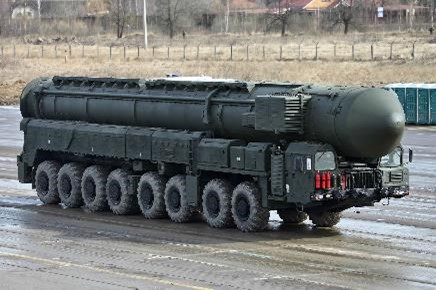 A few years ago, a Swedish company installed some steel-making equipment in the Russian city of Magnitogorsk and encountered a warranty-no payment problem from the Russian client. The Russian mill is similar to the Azovstol steel mill in Mariupol, except the Azovstol facility has four manufacturing lines while the Magnitogorsk line has twelve.
A few years ago, a Swedish company installed some steel-making equipment in the Russian city of Magnitogorsk and encountered a warranty-no payment problem from the Russian client. The Russian mill is similar to the Azovstol steel mill in Mariupol, except the Azovstol facility has four manufacturing lines while the Magnitogorsk line has twelve.
Both facilities are Stalin era, with Magnitogorsk partially built before World War II and was the source of the steel used to build the famous T-34 tanks. Stalin was Russia’s “man of steel,” and this was his mill.
Magnitogorsk Here has about 400,000 people and is compared in size with Bakersfield, California, or Tulsa, Oklahoma. The name means magnetic mountain in English and refers to a prominent protrusion of magnetite, a form of iron ore, on the extreme southeastern edge of the Ural Mountains.
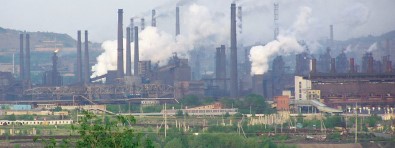 The Swedish equipment was installed across all twelve manufacturing lines and experienced rapid overheating failure and structural collapse. Western insurance companies were on the ropes for millions of dollars in claims by the Russians.
The Swedish equipment was installed across all twelve manufacturing lines and experienced rapid overheating failure and structural collapse. Western insurance companies were on the ropes for millions of dollars in claims by the Russians.
I investigated the failures to provide expert testimony in the courts. My expertise is in the industries that form the economic backbone of Russia, and I read technical Russian to keep up with their engineering literature.
The Russian steel mill operated one somewhat modern steel-making line with proper instrumentation and controlled operation. The clients would see this line with the output sent to clients with the most rigorous quality inspection.
The remaining lines were a filthy mess. Operators were either drunk at work or had the appearance of deep alcoholics on the verge of death. The machinery was poorly controlled and experienced high downtime for repairs. The final steel composition wandered in and out of specification, but the quality control documentation was pencil-whipped to appear in the groove.
Russia uses this steel to build its ships, tanks, bridges, and other structures.
Like so much in Russia, the Magnitogorsk complex is enormous. Marxist economic calculation favors economies of scale to produce goods and services at the lowest unit cost. However, without an actual market clearing price associated with production, Marxist economics does not have the means to calculate diseconomies of scale. These economic and physical headwinds arise from running large systems under one roof or under centralized control.
Russia has a terrible diseconomy of scale problem.
Information flows in one direction in Russian systems. The central authority issues an order and moves on to another task. Systems do not return data from the production line, civilian population, or the military front line indicating compliance with orders, problems, snags, and inefficiencies.
People assigned to produce data find themselves in hot water when the data does not meet expectations. In Russia, the process auditor is either a good storyteller or quickly unemployed.
For example, I sought the bound and sewn daily logbooks documenting plant operations in Magnitogorsk at the time of equipment failure. Factories keep a log just as the ship’s captain maintains a ship’s log. The pages of interest were missing, having been slit from the binding neatly with a razor. Missing also was the young women engineer, the plant supervisor, and the rest of the staff operating each production line when the failures occurred. They were probably on-site but reassigned ahead of the audit to ensure that the information collected did not deviate from the narrative.
Russia may have officially abandoned Marxist philosophy, but her significant systems were designed and built under Marxism. Russia cannot convert these to a market economy, distributed information flow model. Marxism is a lie, and everything built and operated to Marxist philosophy is necessarily a lie.
Including the Russian Military.
Nuclear War
American policy is to deter nuclear war from other nation-states from occurring. The Russian policy is to win a nuclear war. The best estimate is that Russia has 4,497 warheads in storage and 1458 armed-ready to fire status. The United States has 3,750 in storage and 1,389 deployed and ready.
A strategic warhead has a yield >100KT, and a tactical warhead is <100KT.
The Basic Principles of State Policy of the Russian Federation on Nuclear Deterrence was promulgated in 2020 and provided six nuclear launch scenarios.
- Nuclear use by a hostile nation
- Biological weapons use, overtly or covertly
- Chemical and nerve agent use
- An existential threat to the Russian State and its leaders
- Intelligence data indicating a potential enemy’s first use
- Any attack on a critical government or military infrastructure
Putin says that Russia can engage in a nuclear war before the state (or Putin) falls. The failure of the USSR shall not repeat in the failure of Russia.
But can he do this?
Apparent weaknesses of American policy are the preponderance of non-state actors unlikely to be deterred and globalism’s goal of replacing nation-states with trans-national corporations. America’s weapons policy is becoming obsolete in the 21st Century.
Russians and Americans see the primary mission of nuclear weapons differently within the limited nation-state perspective due to different translations of Clausewitz from German to Russian and German to English.
The Russian translation states that peace negotiations occur while hostilities are underway, and the more brutal the battlefield, the more likely success at the negotiating table. The English translation is the opposite. Minimizing hostilities during negotiations achieves a mutually acceptable result.
The likelihood of a cornered Russia using tactical nuclear weapons in Ukraine and strategic weapons against the United States and the United Kingdom is currently a hot topic.
Putin fundamentally has three levers to power against the West. Russia has hydrocarbons, access to the Arctic, and nukes. The West is replacing its hydrocarbon output from other sources, albeit at a greater cost. China is snipping at his heels over Arctic access, leaving nukes or the threat of nukes.
What if the nukes fizzle on use? Surely they won’t all fizzle, but which weapons in storage or mounted to delivery platforms are like the Russian factories, armored brigades, and naval ships and not at the reported state of readiness?
If Russia is unsure it can knock out the American, British, and French nuclear weapons in a first strike, then using a battlefield nuke is risky, even if they can destroy all of Europe with a second wave.
Failure to eliminate the West’s ability to return fire should Russia launch warheads that go pop instead of bang will result in the destruction of Russia and the end of Russian civilization. Mass starvation and the replacement of the Russian race with third-world migrants will change the world forever.
Unless Russia launches a perfectly successful first strike, Russia will vanish like Carthage or Troy or every prior civilization.
The JASONS
The United States Government gives Russian weapon reliability high-level consideration. Under the anti-proliferation treaties, Russia and the United States exchange weapon inspection observers. However, the entire existence of the Russian government depends on the credibility of its nuclear weapons.
If there is any place incentivizing Russia to create a Potemkin Villiage, it is here.
Nuclear weapons are an engineering nightmare and consequently limited to nations with deep science and engineering competencies.
National Labs such as Sandia certainly maintain an interest in Russian weapon reliability, as do organizations such as the National Reconnsence Office, the other three-letter agencies, and the JASON Group.
The Eisenhower administration established the JASONS under Bell Laboratories as a collection of the best and brightest, primarily physicists, in the United States. The group is small and part-time and now reports to the MITRE group, a federally funded research and development company Here.
Members of the JASONS are national security assets, and it is claimed that they publish about fifteen documents per year. A few are unclassified—most cover the highest-level innovations intended to provide the United States with a military advantage.
JASON member non-classified reports to Congress have recently covered nuclear weapon reliability and global biowarfare detection laboratories. This highly talented group includes eleven Nobel prize winners and is non-political.
Profoundly qualified American physicists take Russian nuclear weapon reliability seriously and have solid and well-considered doubts.
Russian Nuclear Weapon Reliability
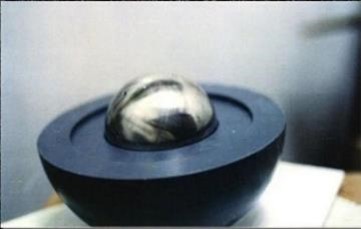 Nuclear weapon reliability is not the same as a refrigerator or automobile reliability metric. Nuclear weapons are one-shot and done devices produced in limited quantities. It is difficult to assess reliability over small sample sets over long periods. It is even riskier to predict the reliability of complete delivery systems, especially as many missiles must transit through the extremes of space flight before detonating. It is difficult, perhaps nearly impossible, to develop accurate reliability confidence intervals under these conditions.
Nuclear weapon reliability is not the same as a refrigerator or automobile reliability metric. Nuclear weapons are one-shot and done devices produced in limited quantities. It is difficult to assess reliability over small sample sets over long periods. It is even riskier to predict the reliability of complete delivery systems, especially as many missiles must transit through the extremes of space flight before detonating. It is difficult, perhaps nearly impossible, to develop accurate reliability confidence intervals under these conditions.
Thermonuclear weapons use uranium 235 or plutonium 239, but mostly plutonium pits as the primary stage to create the 100 million° K heat and the burst of X-rays necessary to detonate the weapons secondary stage. The secondary, or hydrogen bomb portion, consists of deuterium, tritium, or lithium deuteride encasing a plutonium spark plug. The burst of X-rays compresses these around the spark plug so intensely that its plutonium goes supercritical and heats the bomb to 300 million°K, initiating nuclear fusion.
Quite a bit can go wrong. At least 112 storage-related defects are possible.
The pits are spheres of fissile material within spheres, within spheres. They were solid like a cherry pit in the early days, but technology evolved while the name remained the same. A pit life expectancy of 40-50 years once limited bomb reliability due to corrosion, micro void formation, and embrittlement. The concern is void swelling due to the formation of plutonium’s decay products.
However, pits are now assumed to function or be able to achieve criticality for more than 100 years. Maybe for centuries if they are at least 90 percent of plutonium 239, written as 239Pu.
Suppose the pit contains more than 7% of the plutonium isotopes 240Pu or 242Pu, some of the six significant plutonium isotopes. In that case, the warhead does not achieve the correct balance of fast and slow neutron emissions and fizzles.
Plutonium is an artificial element produced in nuclear reactors such as the units at Chornobyl. Uranium must be irradiated for just the right amount of time to produce 239Pu; otherwise, the contaminants 240Pu and 242Pu, and others form.
The entire world learned how poorly the USSR operated reactors through the catastrophe at Chornobyl. Many Russian nuclear weapon pits may be contaminated and are mostly paper tigers as nuclear explosives. They can still function as nasty dirty bombs.
To further understand this, see Jack Wheeler’s article:
North Koreas Nuke Test Flop Here
Few weapons detonation tests evaluated reliability. The United States performs artificial component aging tests using ovens to heat weapon components, followed by physical tests and hydrodynamic compression testing of the pits. These tests and inspections, including re-machining, are performed in costly, purpose-built facilities using robots and glove boxes.
Testing, test instruments, facilities, and organizations require expensive, volatile skills and consistent maintenance to produce valid results. These are in short supply in Russia.
Because few tests evaluated reliability, there is little choice to remanufacture weapons back to original specifications. However, Russia did not finance the original manufacturing facilities continuously and could not maintain institutional knowledge.
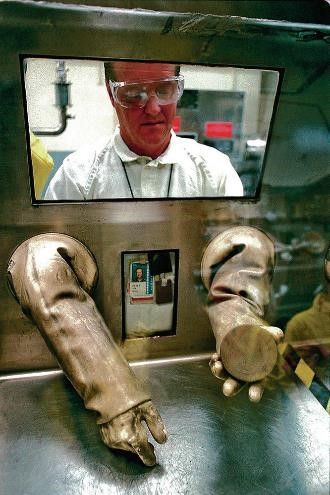 The United States spends $7 Billion/year to maintain the nuclear stockpile, or 1% of the military budget. One percent of the Russian military budget is only $600,000 per year. The average Walmart superstore turns $600,000 in four days. Either Russia is paying atomic workers much less than Walmart employees, or they are not maintaining their stockpile.
The United States spends $7 Billion/year to maintain the nuclear stockpile, or 1% of the military budget. One percent of the Russian military budget is only $600,000 per year. The average Walmart superstore turns $600,000 in four days. Either Russia is paying atomic workers much less than Walmart employees, or they are not maintaining their stockpile.
The United States dismantles and inspects 11 warheads of each of the seven types in inventory yearly at Lawrence and Sandia Labs. An inspection facility is also at Savannah River.
Weapons stockpiles must be maintained to high standards to prevent weathering and corrosion.
Non-fissionable nuclear weapons components such as plastics, wires, insulation, operational sensors, computer chips, flight trajectory sensors, chemical explosives, batteries, radars, and o-rings, decompose when exposed to the steady stream of neutrons originating from the pits. They also lack enough tritium to refill leaky bottles within bomb casings. The degraded performance of any component might result in the weapon’s failure to achieve 300 million°K in the fraction of a second necessary to initiate nuclear fusion.
The bomb fizzles if the primary’s yield is too low to set off the secondary. Radiation transfer from the primary to the secondary is nonlinear; The secondary will either go bang or won’t. There is no in-between. Reliability faults are not a yield issue; they are a go or no-go issue.
Russians cannot determine weapon reliability statistical confidence intervals because there is a lack of sufficient testing. They cannot maintain storage, inspection, and repair facilities; they allow their technical workforce to disperse.
Russia cannot risk a weapons failure in front of the world, so they must use multiple weapons per target in the hope of one working. They do not have a limited tactical weapon use option.
Major Maintenance
The United States is spending $1.2 Trillion over the next 20 years to upgrade the B-61Y13 Mod.12 earth-penetrating gravity bomb. The W-76Y2 Mod.2 Trident warhead with a small 5KT yield is also in production.
Congress is debating the addition of the UGM-133A earth-penetrating warhead for the upgraded/New Trident II D-5 missile.
Russia claims to have just completed the modernization of its entire warhead inventory. Really? The United States requires trillions of dollars, massive custom-built facilities, and decades to perform the work Russia claims to have achieved in a few years.
My experience with Russian heavy industry says they did not and cannot modernize their weapons at anything near their claimed rate.
Missiles
Russian ICBM testing is limited to the development of new types and models. They do not test missiles that are in silo storage. The United States periodically test-fires Minuteman II missiles into the Pacific test range. However, the USA has never fired a Minuteman II from a silo to the test range. Vandenburg launches them to avoid debris falling inland if a missile fails. There are plenty of silo reliability questions unanswered due to this policy.
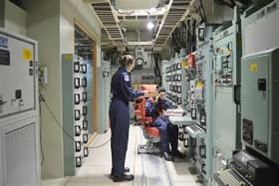 Some Russian ICBMs are liquid-fueled, which the United States found unreliable after a socket wrench dropped in an American silo in 1980 hit a Titan missile plumbing fixture, leading to an explosion and ejected warhead. A damaged Russian missile in a silo remains in place; there does not appear to be a funding mechanism to repair it. It just sits there.
Some Russian ICBMs are liquid-fueled, which the United States found unreliable after a socket wrench dropped in an American silo in 1980 hit a Titan missile plumbing fixture, leading to an explosion and ejected warhead. A damaged Russian missile in a silo remains in place; there does not appear to be a funding mechanism to repair it. It just sits there.
After manufacturing, the average age to discover an American nuclear weapon defect is 1.8 years. The American stockpile has seven different models of warheads so that if a flaw emerges in one type, the others can fill the gap.
Russia tested its RS-28 Saimat ICBM in northwest Russia on April 20, 2022 (both Hitler and Napoleon’s birthday) from the Plesetsk Cosmodrome and hit the Kamchatka test range. The missile is a heavy lifter designed for ten MIRV warheads or a hypersonic glide weapon. It has a short boost phase.
Russia is also working on the Posidon autonomous underwater vehicle with a claimed range of 6,500 miles, a cruising depth of 3,000 ft, and a dirty cobalt bomb warhead designed to make a 500ft tall tsunami wave. It is the New York to Norfolk fleet killer.
Neither Russia nor the USA has ever launched an ICBM over either pole. The Saimat missile is a demonstration of the problem Russia faces. Russia spends money on shiny and new but has severely ignored the tried and true. They have reached the point where they cannot use their nuclear arsenal for the risk of exposing its expected high rate of failure.
********
Precision Weapon Usage Rates In Ukraine
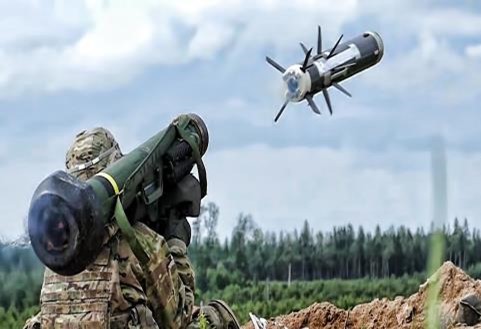 The United States has given Ukraine over one-third of the American Javelin missile stockpile. They are not cheap, and America’s ability to ramp up production of missiles is as constrained as all other manufacturing. America ran out of Hellfire missiles in 2015 in pursuit of ISIS. History tells us that the fastest the military-industrial complex can produce a batch of Stinger missiles is 18-24 months.
The United States has given Ukraine over one-third of the American Javelin missile stockpile. They are not cheap, and America’s ability to ramp up production of missiles is as constrained as all other manufacturing. America ran out of Hellfire missiles in 2015 in pursuit of ISIS. History tells us that the fastest the military-industrial complex can produce a batch of Stinger missiles is 18-24 months.
The primary weapon suppliers rest on second-tier component manufacturers and their creaky supply chains. We have a severe manufacturing base problem. General Milley is now saying that the war in Ukraine can last for years, an abrupt reversal of his earlier statements. The United States cannot replenish stocks anywhere near fast enough for a protracted war.
Australia announced that it plans to become a Tier 1 precision munition arsenal of democracy. We shall see.
********
Zalenskyy
The emerging leadership style in the 21st Century is the Three Skill Model, Here, as used by the United States Air Force and Space Command. Long-time TTP members might remember the extended discussions of leadership styles in the forum.
Western culture has eroded. Hard-won lessons embedded in tradition are lost through the efforts of the social media industry, resulting in a severe headwind. The Three Skill Model of technical mastery, command and control communication, and conceptualizing ideas from the leader’s mind to the followers is the anecdote for woke, grievance-based, transformational culture.
It works, as Zalenskyy is showing the world daily and doing it so well that he is turning Russian –speaking people against the Kremlin. He is even driving Russian soldiers to switch sides and fight on the side of Ukraine. This is an age-restricted video Here.
Frantic Western intelligence agencies commissioning the likes of Facebook and Twitter to galvanize public support for Ukraine led to the media immediately throwing the same smears reserved for Trump towards Putin and the same cheers for Biden towards Zelenskyy. Having just lived through six years of the lying scum media saying precisely the same things, those people moved by dialectic arguments rejected the pure rhetoric of the media.
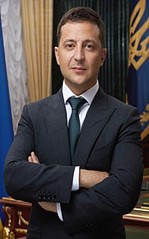 Zelenskyy pushed front-line combat skills down to the soldiers and NCOs in Ukraine’s military to his great credit. There are virtually no indications that Zelenskyy has been directing combat in an LBJ or McNamara style.
Zelenskyy pushed front-line combat skills down to the soldiers and NCOs in Ukraine’s military to his great credit. There are virtually no indications that Zelenskyy has been directing combat in an LBJ or McNamara style.
Further, Zalenskyy has not spent his time managing the command, control, and communication structures of Ukraine’s military as a Barak Obama or Joe Biden did to the American military in Afghanistan.
Instead, Zelenskyy has been managing the conceptualization of ideas from one mind to many. He has done this exceptionally well.
He has done it so well that he exposed Twitter’s lack of narrative flexibility. Twitter calls people Nazis; it is fundamentally all they are capable of doing.
Senior leaders within the American intelligence community quickly realized that Twitter, Facebook, and the cable networks were capturing the hearts of lefties with their rhetoric but harshly pushing conservatives away by comparing Zalenskyy to Biden and Putin to Trump.
Those were fighting words.
 The reaction has been swift. Within two months of the emergence of the public opinion crisis, Twitter has been relieved of its duty as the left-wing mouthpiece. CNN has exploded. Zuckerberg is under significant legal pressure.
The reaction has been swift. Within two months of the emergence of the public opinion crisis, Twitter has been relieved of its duty as the left-wing mouthpiece. CNN has exploded. Zuckerberg is under significant legal pressure.
Zalenskyy is precisely doing as he should. to save his country. He is rallying the world to the aid of Ukraine.
And you know what? If you were following the TTP Forum in 2018 and 2019, we predicted the necessity of a Zalenskyy and the importance of the conceptual leader to counter wokism. It seems that he emerged in the right place, at the right time.
This link Here explains the corruption in Ukraine preceding the Russian invasion. Top American government officials were deeply involved, and they should be hunted down and punished. However, this corruption was not the fault of the Ukrainian people. But it was the fault of a man and his dog:
Blaming Ukraine for being their victim is wrong.
I have hope that the sudden push to take CNN, Twitter, and other media outlets away from the idiots also results in charges of corruption and treason for Soros and his dog.
********
Condoleeza Rice on Ukraine and the World
Yesterday, Soviet Specialist Condi Rice discussed world events Here at Notre Dame and the consequences of India and China swooping in to snatch up American assets abandoned in Russia, among other insights on the war and the key actors. She believes that Putin is preparing to attack Moldova by sea, and Putin is using false flags to justify an invasion. Poland and Romania are mobilizing their armed forces and moving them toward Moldovia.
It is a 58-minute video that sheds insight into her worldview as the nation’s former top Kremlinologist.
********
One last thing before we wrap:
The Battle of Kursk, Ukraine, was the Wehrmacht’s last offensive of Operation Barbarossa. Historians have studied it as the greatest tank battle in history. Putin’s ego has him trapped in repeating history by expecting too much from his armor. He throws as many tanks as he can muster against Ukraine, but Ukraine has now had months to prepare defenses in depth.
The video below is a fantastic stop-action simulation of the Battle of Kursk, and the similarities with the present war in Ukraine are remarkable. This time the Ukrainians fill the role of the historic Russians, and Putin controls the German Army. You might show this to that millennial kid down the block that does not understand history. 12minutes 15 seconds
Mike Ryan is a consulting chemical engineer in the minerals, iron and steel, forest products, cement, and heavy chemicals industries.

